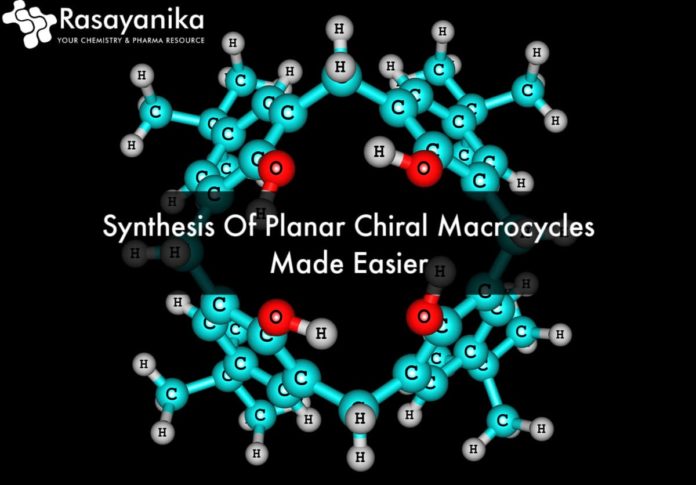Synthesis Of Planar Chiral Macrocycles Made Easier By Scientists
Molecules made of large rings are called macrocycles. These molecules don’t always stay ”floppy” despite its large size and flexibility. They sometimes lock themselves in specific geometries and shapes.
It is critical to control the three-dimensional shapes of macrocycles in manufacturing. It helps to determine if a prescription drug will work on a disease or a perfume’s aroma is unique.
Controlling the shapes of these large molecules has not been an easy task in synthetic chemistry. But the Université de Montréal chemists made the process simple.
Professor Shawn Collins and his team published in Science today that a natural process called biocatalysis can be used to control the shapes of macrocycles. This new finding could prove beneficial in electronics and pharmaceuticals.
What makes the macrocycles special is its planar chiral shape. The planar chiral topology determines how the molecules interact with nature. Since the making of planar chiral macrocycles had been difficult, they remained underexplored.
One alternative for two methods
Until now, there were two ways to make the macrocycles. Either scientists had to go through tedious multistep process, or they had to use expensive, toxic, and non-abundant catalysts like rhodium
and ruthenium.Collins’ team looked for an alternative as these approaches had made the scientists frustrated for a long time. And they found the alternative in biocatalysts, a natural process that uses biological non-toxic catalysts and enzymes for the synthesis of planar chiral macrocycles.
Even though scientists have never used biocatalysts for the synthesis of planar chiral macrocycles before, there was a commercially available product that could be used as biocatalyst. CALB, a lipase enzyme. Even though the enzyme was not evolved for this purpose, it could shape the macrocycles in near-perfect selectivity.
The research team also came up with a plan to decorate macrocycles with functionality using simple molecular building blocks. “Functionality are handles or simple groups of atoms that be easily transformed into arrangements that are more complex,” Collins explained.
Planar chiral macrocycles have several uses in anticancer agents, antibiotics, and lasers and displays of electronics. This new development by the team can hopefully create an impact on the industry.

















































